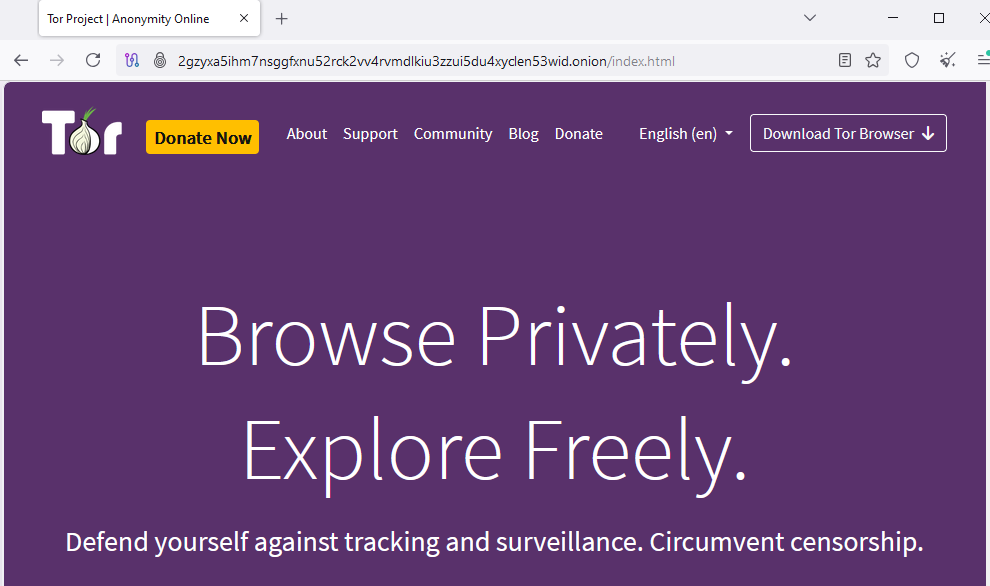When most people hear the phrase “dark web,” they picture shadowy marketplaces, hackers, and illegal trade. That reputation isn’t entirely wrong—but it’s also not the whole story. The dark web is more complex, serving both as a haven for illicit activity and as a crucial tool for privacy, security, and free expression.
Think of the internet like an iceberg. The familiar “surface web”—searchable through Google and other engines—makes up less than 10% of the whole. Beneath it lies the deep web, a vast section that includes private databases, corporate intranets, medical and legal records, and even your personal Netflix account. The dark web, in turn, is a small, intentionally hidden slice of the deep web, accessible only with special tools like Tor (The Onion Router), Freenet, or I2P.

From Naval Labs to Public Use
The dark web’s story begins not in an underground hacker forum but inside the U.S. Naval Research Laboratory. In the mid-1990s, researchers Michael G. Reed, Paul Syverson, and David Goldschlag developed a method called onion routing to allow intelligence operatives to communicate securely and anonymously.
The project gained support from DARPA, the same defense agency that helped birth the internet itself. To ensure anonymity, the system had to be used by more than just spies—otherwise anyone on the network could be easily singled out. So, in 2004, the Navy released the source code to the public, paving the way for the creation of the Tor Project in 2006. With support from the Electronic Frontier Foundation and funding—ironically—from parts of the U.S. government, Tor became a nonprofit organization focused on privacy and digital freedom.
How Tor Works: Layers of Privacy
The name “The Onion Router” is no accident. Like an onion, Tor hides data in multiple layers of encryption. When a user sends a request, it bounces through a series of volunteer-run servers around the world. Each stop peels away one layer, revealing only the address of the next node. By the time the data reaches its destination, its origin is effectively untraceable.
This extra security comes at the cost of speed, but it shields users from surveillance by governments, corporations, or even internet service providers.

Everyday Uses for the Public
While Tor is best known for its role in accessing hidden services, it also has practical uses for everyday internet users. In many ways, Tor can function like a free VPN, masking your IP address and preventing websites, advertisers, or even your internet service provider from monitoring your browsing activity. This can be useful for people who want to research sensitive topics, avoid targeted advertising, or simply browse with greater privacy.
That said, there’s a trade-off. Because your traffic is routed through multiple encrypted layers and volunteer-run nodes around the world, Tor can be significantly slower than normal browsing. It’s an effective shield for anonymity, but not always the most convenient tool for streaming, downloading large files, or general everyday use.
For those interested in trying it out, the Tor Browser is free to download at https://www.torproject.org/download/ and is available for Windows, macOS, Linux, and Android.
Who Uses the Dark Web?
The dark web has both legitimate and illegitimate uses, and its user base is diverse:
-
Everyday people: Protecting personal data from identity thieves or browsing without advertisers tracking them.
-
Journalists and whistleblowers: Submitting sensitive information through tools like SecureDrop, or publishing in repressive regimes. Major outlets like the BBC and The New York Times maintain dark web versions of their sites.
-
Activists and human rights defenders: Reporting abuses and organizing protests under the radar of censorship and surveillance.
-
Law enforcement and military: Conducting undercover operations, online surveillance, or covert communications from hostile regions.
-
Cybersecurity professionals: Testing firewall rules, researching exploits, or analyzing threats.
At the same time, the dark web is infamous for illegal markets offering drugs, stolen data, counterfeit documents, malware, and more. Sites like Silk Road, AlphaBay, and Hansa became household names after high-profile law enforcement takedowns.
Finding the Hidden Corners
Unlike the surface web, dark web sites don’t end in “.com” or “.org.” Instead, they use “.onion” addresses, generated from encryption keys. These addresses often change, making them difficult to track. Specialized search engines like Torch, Ahmia, or DuckDuckGo’s Tor version help users navigate, though reliability is inconsistent.
It’s important to be cautious when looking for Tor links. Many directories that claim to list “the best onion sites” often contain scams, phishing pages, or links to malicious content. For safety, stick to trusted resources such as the official Tor Project website and reputable outlets that mirror their content on the dark web. Clicking blindly on unknown onion links can quickly lead to unsafe territory.
More Than a “Digital Underworld”
It’s easy to write off the dark web as a digital underworld—and there’s no denying that serious crimes take place there. But it’s more accurate to see it as a neutral technology: a platform for anonymity that can shield criminals or protect dissidents, depending on who is using it.
In an era of growing surveillance, data breaches, and censorship, the dark web represents both a challenge and an opportunity. Understanding its dual nature is essential—not just for law enforcement and cybersecurity experts, but for anyone who wants a more nuanced view of digital privacy and freedom.
Feeling lost in the digital world? Dr. Tom is here to help!
Join Dr. Tom every week in his column, Dr. Tom’s Cyber Bits and Tips, for byte-sized advice on all things cyber and tech. Whether you’re concerned about online safety, curious about the latest cybercrime trends, or simply want to navigate the ever-evolving digital landscape, Dr. Tom has you covered.
From practical cybersecurity tips to insightful breakdowns of current threats, Dr. Tom’s column empowers you to stay informed and protect yourself online. So, dive in and get savvy with the web – with Dr. Tom as your guide!
Sign up for our Sunday Spectator. Delivered to your inbox every Sunday, with all the news from the week.
















